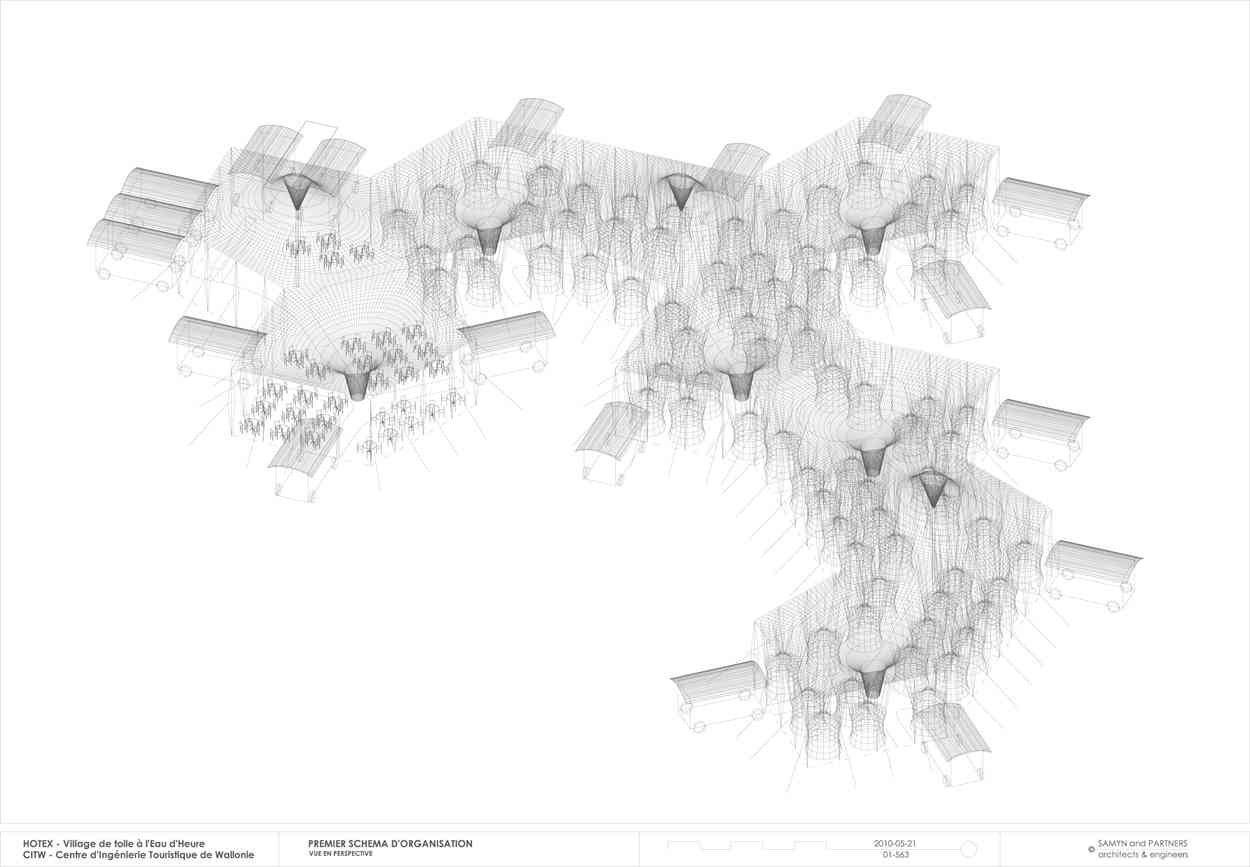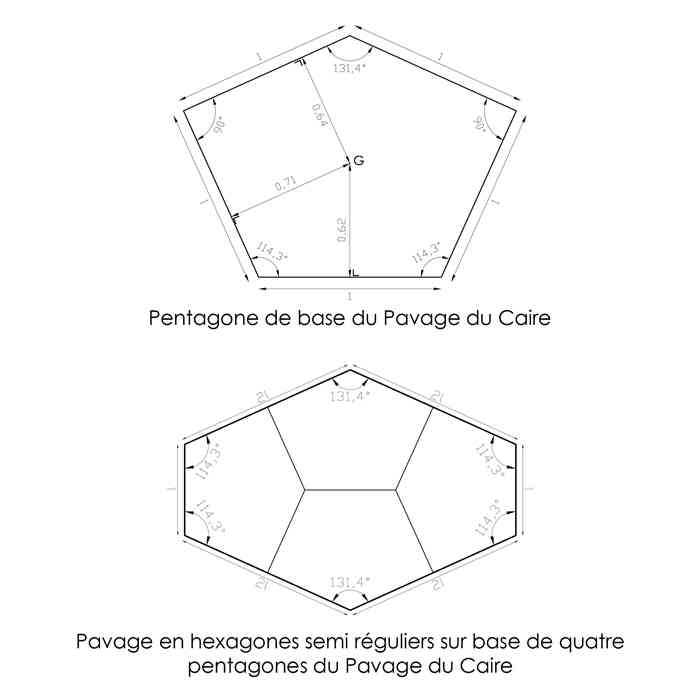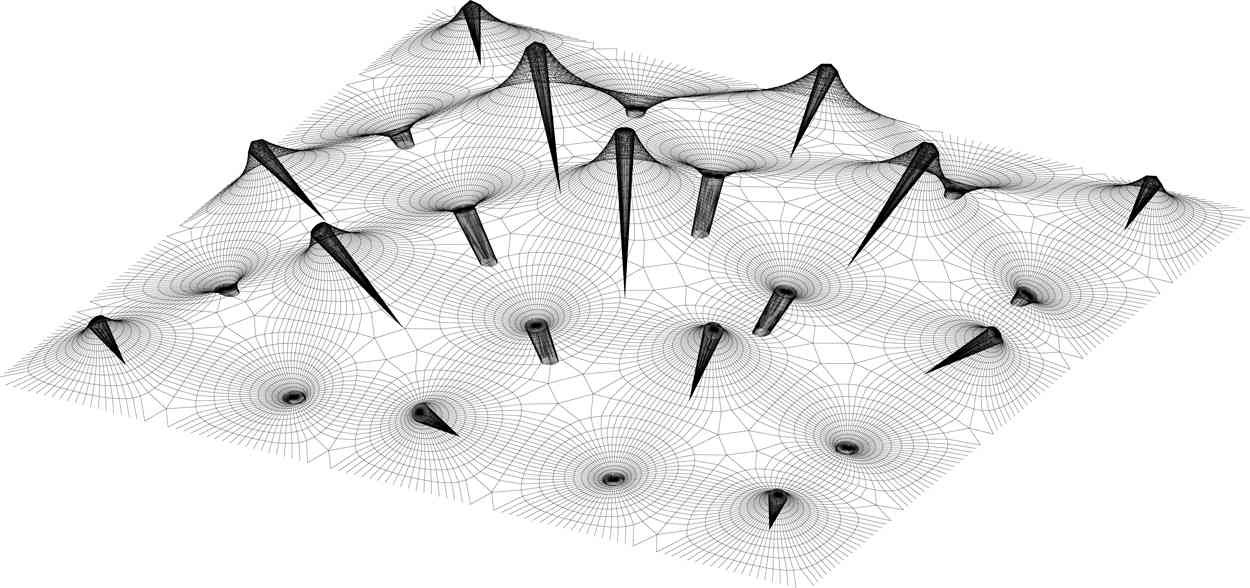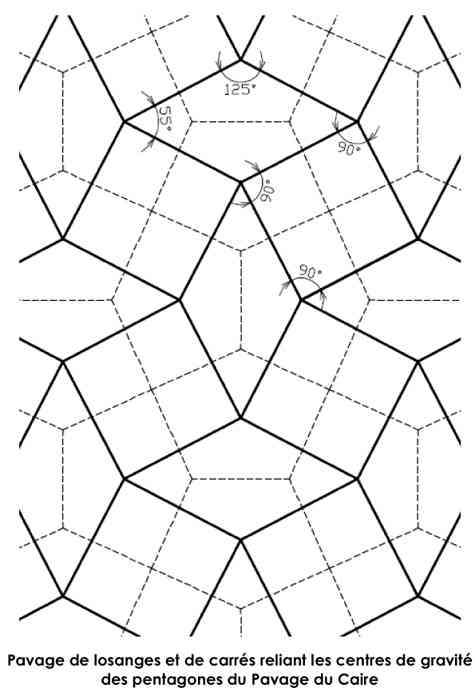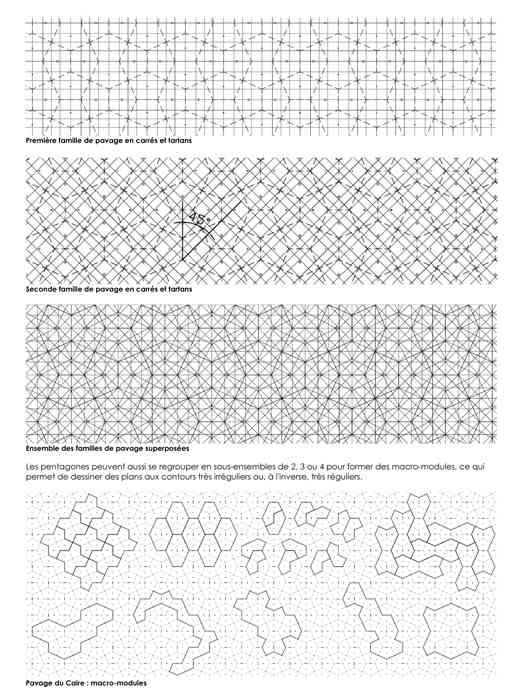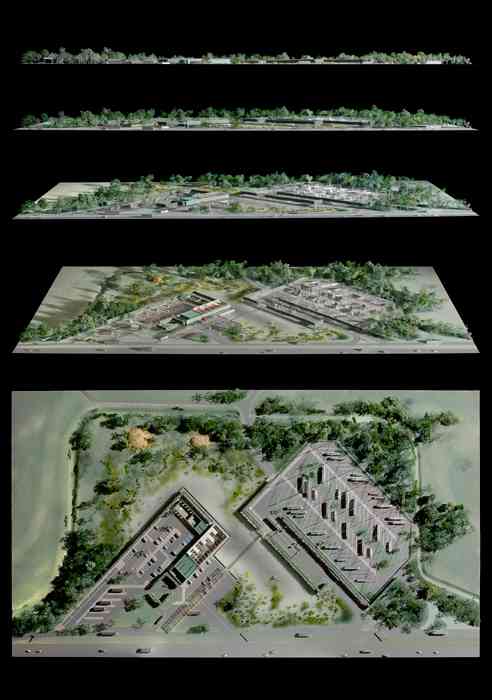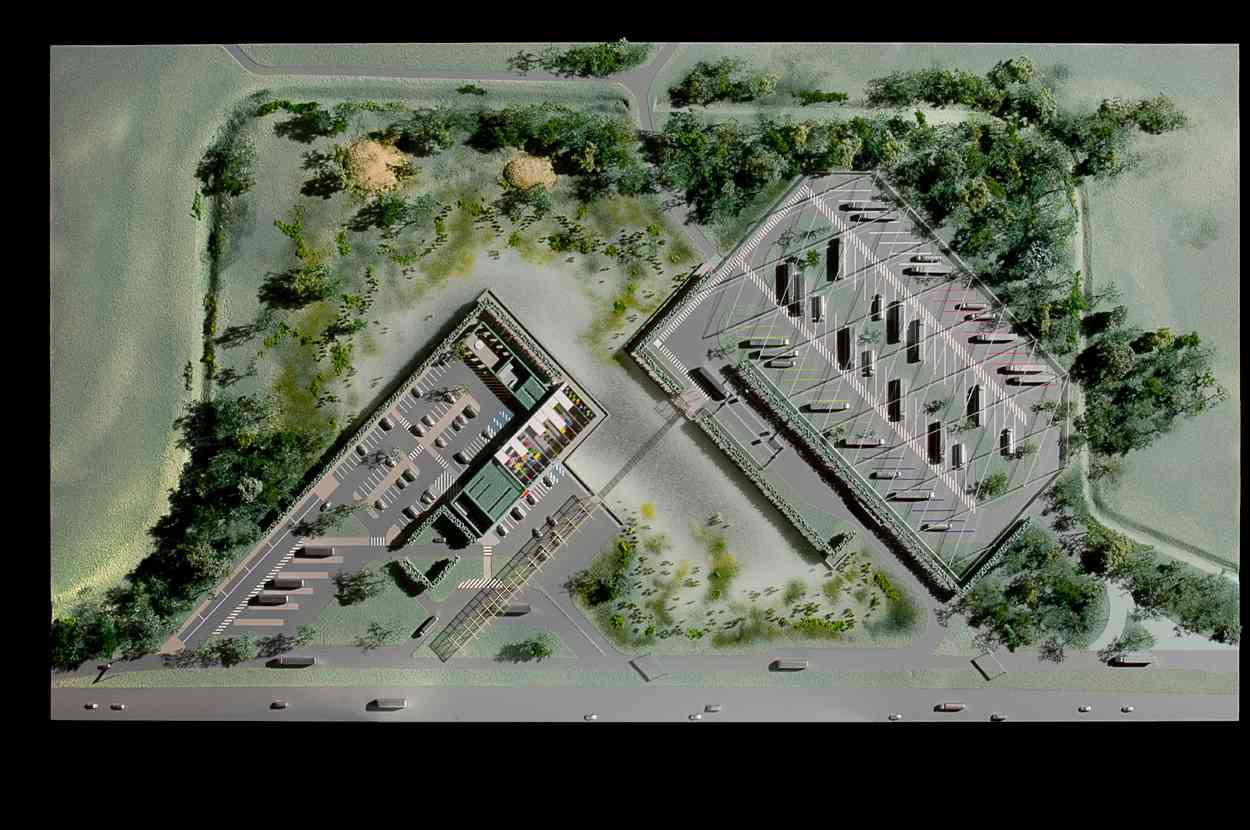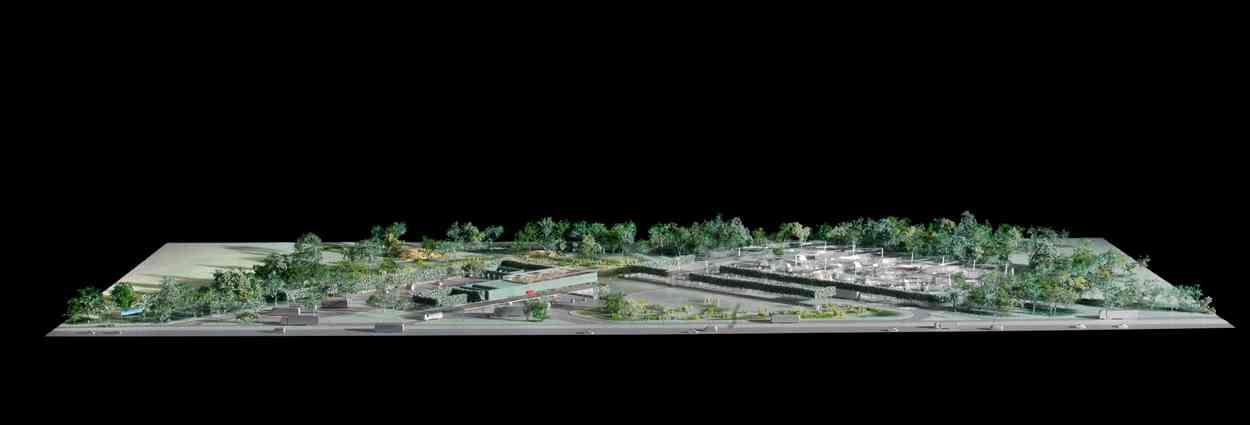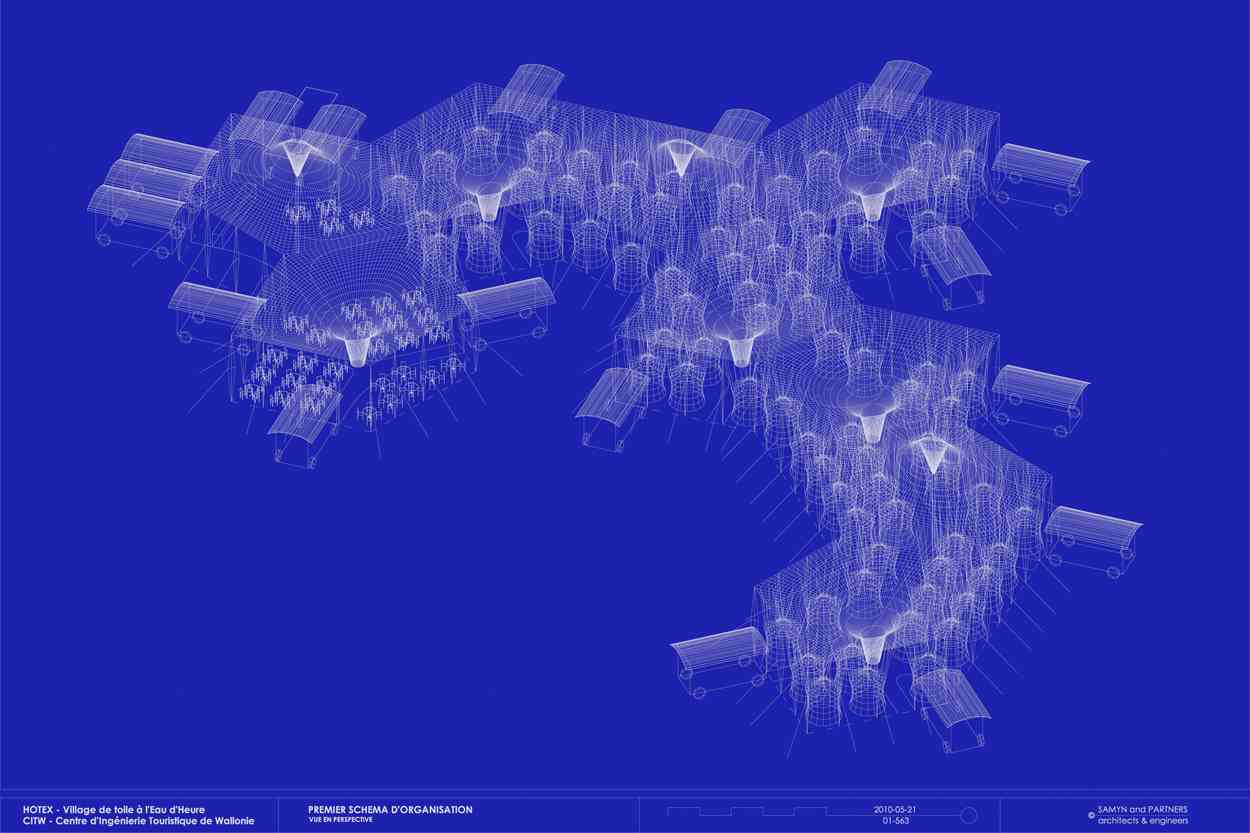
563-HOTEX – Cloth Village
Lac de L’eau d’heure
BELGIUM
(2009-2010); (01-563).
At design stage
– Architecture
– Building physics and internal climate
– Structural engineering
THE PROGRAM AND THE ARCHITECTURAL CONCEPT
The natural park of the lakes of Eau d’Heure is part of the protected Walloon heritage region.
Many sporting and open air activities are carried out here. The development of such activities requires an increased supply of temporary accommodation with a small ecological footprint, on a seasonal basis.
The purpose of this study is, therefore, to design temporary accommodation, which could be erected on any grassland in the park, regardless of its shape and form, and adaptable to the presence of tall trees.
This new type of accommodation should be:
– inexpensive,
– easy and fast to erect and dismantle without premature wear and tear,
– suitable for the location’s humid climate,
– light and compact for transport and storage,
– safe to use (fire, flooding),
– intruder-proof,
– comfortable according to the criteria of “Glamour & Camping” (or “Glamping”), somewhere between a nomadic settlement (caravan or campsite) and a standard hotel,
– of variable geometry in order that it may be erected on a variety of sites,
– of a size that can be easily adjusted to a wide range of requirements,
– with the capacity to produce energy and manage water and waste autonomously,
– transparent to allow growth of the green space it covers.
The design
The roofing design should sometimes have a flexible, organic form to enable easy construction on uneven, rough ground, and at other times it will have a set form so that it can be erected on a rectangular plot of land.
For reasons of comfort and cost it is necessary that these designs with varying forms can be constructed by assembling identical polygons, which individually constitute a constructive unit.
The only known paving with all of the required qualities is the so-called “Cairo” paving.
Private cells
Each cell may have two levels and can, therefore, hold up to 4 people. It may be surrounded by a private area, a type of enclosure forming a reception and daytime living area, between the common area and the sleeping cell also acting as a noise buffer.
The walls, the floor and the ceiling of the sleeping cell are made entirely out of fabrics just like the wall of the enclosure.
The floor, made of a drainage fabric, covers the grass on the area without preventing its growth, and enables the occupants to walk about without getting their feet wet.
Caravans
Caravans provide shelter for sanitary units (evenly distributed between the cells), linen room, utility room, kitchens and potential workshops as well as administrative units and safes. The caravans would be stationed at the periphery of the marquee formed by the pentagonal units.
CONSTRUCTIVE PRINCIPALS FOR THE ROOFING
Everything has been done to ensure the construction is as light as possible, can be dismantled and stored as compactly as possible in the caravans.
The desired transparency for the roofing of the pentagonal units means that a hybrid construction with a load-bearing rope net on as few supports possible and an independent sealed membrane are required.
Fastenings perpendicularly stretch the net over the sides of the pentagons forming the perimeter of the roof.
Moreover, the presence of the rope means the roofing can be used for hanging up all the objects it covers thereby limiting the compression of objects to a strict minimum.
The best arrangement in terms of resistance is one where the ropes follow, for the general predefined shape of the net, the main lines of pressure (forming a network of orthogonal lines) in the heaviest load cases.
MATERIALS
An important study was carried out to research the most suitable materials for the construction of a prototype, which will be built as of 2011 as a follow up to the study.
Document E41_01/563 -En Issue of 2011-11-15
Philippe SAMYN and PARTNERS All projects are designed by Philippe Samyn who also supervises every drawing
Structural Engineering:
Philippe SAMYN and PARTNERS with SETESCO (sister company 1986-2006) or INGENIEURSBUREAU MEIJER (sister company 2007-2015) if not mentioned
Philippe SAMYN and PARTNERS
with FTI (sister company since 1989)
if not mentioned
| 01-563 | TEXTILE HOTEL & VILLAGE, LACS DE L’EAU D’HEURE. |
| Client: | CITW. |
| Architecture: | Partner in charge : Å. Decorte. Associates : O. Jottard., J-C Puechblanc |
For plans sections and elevations, please refer to the archives section of the site available from the “references” menu.


